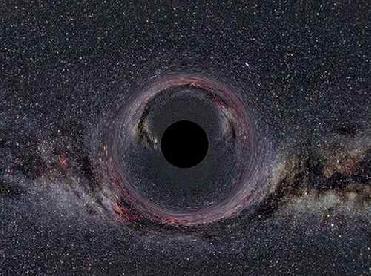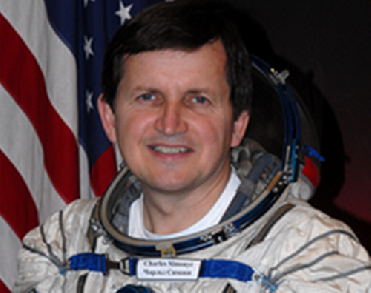
Black Hole. Wikipedia image
MUMBAI (BNS): An Indian astrophysicist Pankaj S Joshi of Mumbai’s Tata Institute of Fundamental Research (TIFR) has discovered a new theory that says ‘collapsing massive stars finally explode and the matter disperses in space.’
Joshi’s ‘Naked Singularities’ has drawn the attention of scientists across the world. For the first time an Indian’s discovery has appeared as the cover article in the current issue of Scientific American. According to Joshi’s theory, these layers of matter can travel and condense elsewhere, giving birth to new stars.
On his article appearing in the journal, Joshi said that it was a great feeling and also proves its credibility to the new theory. Joshi said that his theory had massive implications for fundamental physics and cosmology.
It has been normally believed that a large star eventually collapses to a black hole, but some theoretical models suggest it might instead become a so-called naked singularity.
“Sorting out what happens is one of the most important unresolved problems in astrophysics,” Joshi said.
The discovery of naked singularities would transform the search for a unified theory of physics, not least by providing direct observational tests of such a theory, he said.
The TIFR scientist said that modern science has introduced the world to plenty of strange ideas, but surely one of the strangest is the fate of a massive star that has reached the end of its life. “Having exhausted the fuel that sustained it for millions of years, the star is no longer able to hold itself up under its own weight, and it starts collapsing catastrophically. Modest stars like the sun also collapse, but they stabilise again at a smaller size. Whereas if a star is massive enough, its gravity overwhelms all the forces that might halt the collapse. From a size of millions of kilometers across, the star crumples to a pinprick smaller than the dot on an "i.",” he explained in his theory.
Most physicists and astronomers think the result is a black hole, a body with such intense gravity that nothing can escape from its immediate vicinity. “A black hole has two parts. At its core is a singularity, the infinitesimal point into which all the matter of the star gets crushed. Surrounding the singularity is the region of space from which escape is impossible, the perimeter of which is called the event horizon. Once something enters the event horizon, it loses all hope of exiting. Whatever light the falling body gives off is trapped, too, so an outside observer never sees it again. It ultimately crashes into the singularity,” Joshi stated.
In his article, Joshi said that if naked singularities exist, the implications would be enormous and would touch on nearly every aspect of astrophysics and fundamental physics. “The lack of horizons could mean that mysterious processes occurring near the singularities would impinge on the outside world. Naked singularities might account for unexplained high-energy phenomena that astronomers have seen, and they might offer a laboratory to explore the fabric of space time on its finest scales,” he wrote.
Event horizons were supposed to have been the easy part about black holes. Singularities are clearly mysterious. They are places where the strength of gravity becomes infinite and the known laws of physics break down. According to physicists' current understanding of gravity, encapsulated in Einstein's general theory of relativity, singularities inevitably arise during the collapse of a giant star. “General relativity does not account for the quantum effects that become important for microscopic objects, and those effects presumably intervene to prevent the strength of gravity from becoming truly infinite. But physicists are still struggling to develop the quantum theory of gravity they need to explain singularities,” Joshi stated.
 Previous Article
Previous Article Next Article
Next Article













The Indian Air Force, in its flight trials evaluation report submitted before the Defence Ministry l..
view articleAn insight into the Medium Multi-Role Combat Aircraft competition...
view articleSky enthusiasts can now spot the International Space Station (ISS) commanded by Indian-American astr..
view article